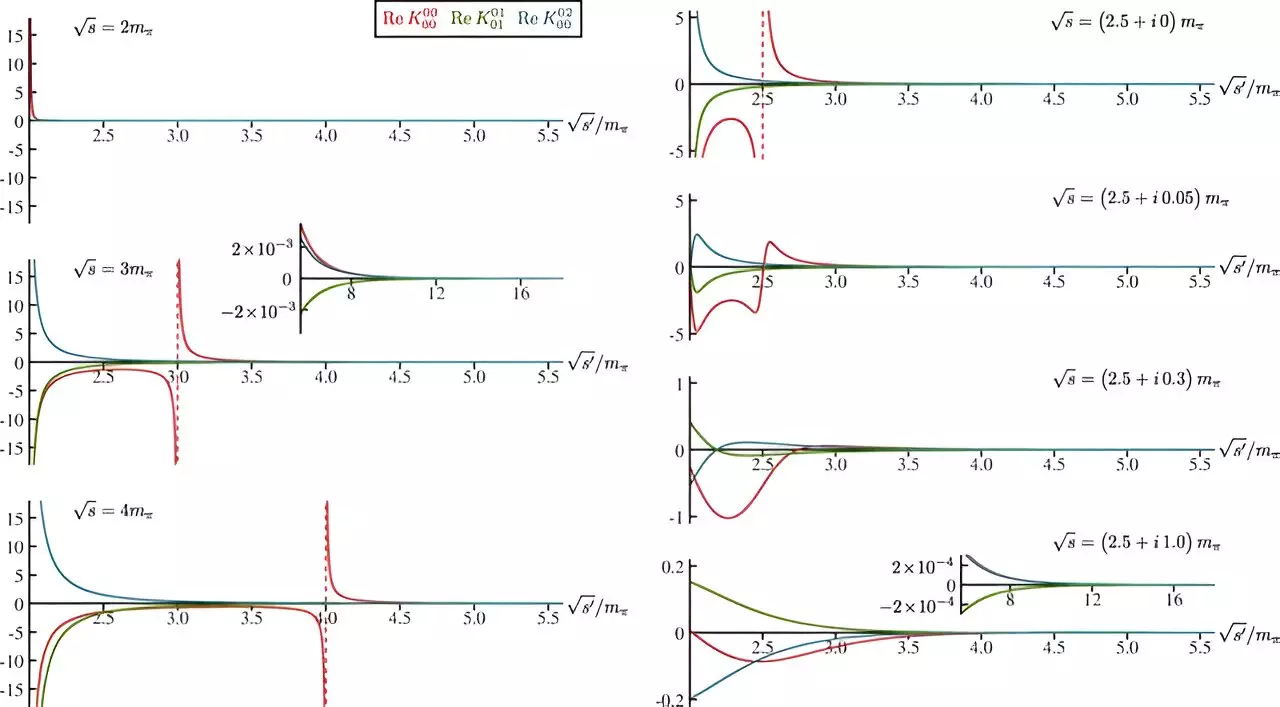In the world of nuclear physics, the strong interaction stands out as one of the essential forces binding the fundamental components of matter: protons, neutrons, and quarks. However, our comprehension of this vital force remains incomplete, especially regarding certain exotic particles that complicate our understanding. A recent groundbreaking study from researchers at the U.S. Department of Energy’s Thomas Jefferson National Accelerator Facility has shed light on one such elusive particle—the sigma meson. Through the innovative application of supercomputing, these physicists have begun to unravel the complexities of this meson, highlighting both the capabilities and the unresolved questions of contemporary nuclear physics.
The Sigma Meson: A Particle Shrouded in Mystery
The sigma meson is a fascinating yet enigmatic particle, composed of quarks like its more familiar counterparts, protons and neutrons. It is created during high-energy collisions between pions, another type of quark-based particle. However, sigma mesons are among the shortest-lived particles, disintegrating back into pions within a minuscule fraction of a second. This ephemeral nature renders them incredibly challenging to analyze using traditional experimental methods, leaving significant gaps in our understanding of their role within nuclear interactions.
Jozef Dudek, a prominent figure in this recent research, articulated the challenges of studying the sigma meson, referring to it as a “long-standing weird guy.” The light mass of the sigma meson—approximately half that of a proton—signifies its importance in discerning the underlying principles governing the strong force. As physicists like Arkaitz Rodas Bilbao emphasize, understanding the mechanisms that allow particles to remain bound within atomic structures holds profound implications for comprehending the very essence of our existence.
Supercomputing: A New Era in Particle Physics Research
While traditional experimental approaches have struggled to provide insights into the sigma meson, the advent of supercomputing has revolutionized nuclear research. Utilizing immense computational power, researchers can now simulate intricate particle interactions in ways previously deemed impossible. The team at Jefferson Lab harnessed the capabilities of supercomputers at both their facility and Oak Ridge National Laboratory to conduct virtual experiments focused on pion-pion interactions, essential for understanding the sigma meson’s properties.
Rodas Bilbao highlights the urgency of employing supercomputers, acknowledging that calculations taking centuries on conventional machines could potentially be completed within one’s lifetime using supercomputers. This leap in computational efficiency allows researchers to delve deeper into phenomena that lie at the heart of quantum chromodynamics (QCD), the theoretical framework describing the strong force. Although simplifying assumptions must be made in these simulations, the introduction of more complex mathematical constraints offers a pathway for increasingly accurate findings.
Collaborative Efforts and Breakthroughs
The collaborative spirit encapsulated by the Hadron Spectrum Collaboration (HadSpec) and the Exotic Hadron (ExoHad) Topical Collaboration further exemplifies the interconnectedness of modern scientific endeavors. With Dudek, Rodas Bilbao, and Robert Edwards pooling their expertise, the research illustrates how diverse skill sets can unite to tackle intricate challenges in the field. Their successful efforts culminated in significant milestones for the exploration of the sigma meson and similar particles, paving the way for future discoveries about the nature of interactions between quarks.
Edwards articulates the essence of success in nuclear research lies not merely in advanced computing but in the frameworks created through collaboration and shared knowledge. The fundamental software resources developed under the Scientific Discovery through Advanced Computing (SciDAC) initiative have now become integral to the sophisticated methods required for high-performance scientific computations. Such synergies mirror the strong interactions they study—in which individual forces come together to produce remarkable results.
The Road Ahead: Complexities Yet to Unravel
Despite the advancements made in understanding the sigma meson, many questions remain unanswered. The research team acknowledges that a deeper comprehension of its internal structure necessitates even more complicated calculations that will eventually need to reflect true particle masses. This careful calibration is vital for ensuring the validity of future theoretical insights that inform experimental research at Jefferson Lab and beyond.
One tantalizing challenge lies in the exploration of other elusive particles like the kappa meson, whose interactions and properties are even less understood than those of the sigma. The methods pioneered in this current research can be applied to investigate such particles, potentially uncovering further layers of complexity within the strong force.
As these researchers push the boundaries of nuclear physics, they embody a broader quest for knowledge that probes not only the fabric of matter but also the very principles that underpin our universe. The fusion of collective intellect, innovative tools, and relentless curiosity is vital as we strive to unlock the doors of fundamental understanding.


Leave a Reply